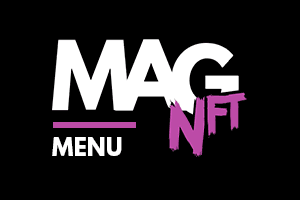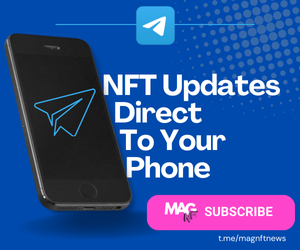Trust, but verify— a timeless saying that has never been more relevant. In the rapidly expanding NFT market, trust alone will not protect your high-value assets.
As of 2024, the NFT market is experiencing exponential growth, with projections estimating the value of this space to hit $230 billion by 2030.
Cybercriminals are watching and adapting. A report by SOCRadar revealed that, as of January 2024, about 19 new threats had been observed, a steep jump from just two years ago. From phishing attacks to sophisticated attacks, the dangers associated with NFTs are evolving speedily.
The big question is: How do you keep your NFTs safe in this volatile landscape? Whether you are a collector, investor, or creator, you must understand the best practices for NFT security. This guide explores the idea of NFT security and how you can get the most out of it.
Key Takeaways:
- NFT security is critical to protecting your assets from scams, phishing, and hacks.
- Use cold wallets, hardware wallets, or trusted hot wallets to store NFTs securely.
- Features like encryption, multi-factor authentication (MFA), and seed phrases are essential for wallet security.
- Choose reliable wallets and follow best practices to keep your NFTs safe.
What is NFT Security?
In the simplest of words, NFT security involves employing different measures to protect your non-fungible tokens from potential risks. The ultimate goal? To ensure your NFTs enjoy utmost protection while preventing unauthorized access.
Securing your NFTs is an essential part of investing in this space. Without proper security protocols, your investments remain vulnerable to phishing, scams, and hack attacks. Hence, NFT security is a non-negotiable priority.
At the heart of every NFT activity lies a blockchain wallet, a platform for storing, managing, and interacting securely with non-fungible tokens. The wallets are essential for protection and enable buying, selling, and transferring NFTs.
But… What are the types of crypto or NFT wallets?
In the vast world of non-fungible tokens, wallets come in different types and are designed for different needs. The sub-branches on NFT wallets include:
- Hot wallets: These are connected to the internet, bringing unmatched convenience and accessibility. While they are easy to set up and ideal for frequent transactions, due to their constant connectivity, most of them are vulnerable to hacking.
- Cold Wallets: In stark contrast, cold wallets operate and store assets offline. While they enjoy enhanced security, with immunity to online threats, they could be more convenient for frequent transactions.
- Hardware Wallets: Combining the best of both worlds, hardware wallets are physical devices designed for the secure storage of private keys. They merge the security of cold wallets with portability. The only catch? You must purchase the actual wallets.
Features Offered by Wallets to Bolster NFT Security
NFT wallets are equipped with powerful tools and features that strengthen the security of the assets. These security features protect wallets against unauthorized access and potential threats.
Below are some of the popular features:
Proper Encryption Protocols and Private Key Management
Of course, private keys are the crypto equivalent of actual keys to a vault. With the key, you can access your wallet and authorize transactions. In more complex terms, a private key is an alphanumeric code generated by a crypto wallet to help prove ownership of blockchain assets.
To simplify, when you first create a wallet, you are given two codes, public and private addresses.
The public address, as the name suggests, is public. It’s what you send people to use when sending you crypto. In stark contrast, a private address should and must always remain private. It is what stores your funds—you lose it—you lose access to your funds—the private key acts as a password unlocking access to your assets.
Private keys, like vault keys, require proper storage to protect your assets. NFT wallets employ advanced encryption techniques to ensure private keys are securely stored. Due to the encryption protocols, even if you lose the devices, you will not lose the assets.
For additional security, modern wallets have features like hardware storage or secure key splitting, ensuring that private keys are accessible and protected.
Multi-Factor Authentication (MFA)
Another popular feature in private key protection mechanisms is multi-factor authentication (MFA). MFA is an account login process involving multiple steps. Here, users are required to fill in more info than just passwords. They can add codes sent to email, answer secret questions, or use biometrics like eyescan, face scan, or fingerprints.
Two-factor authentication is the most popular iteration of multi-factor authentication, which requires only two steps of verification. This affords an extra layer of security for your assets when the password is exposed.
Seed Phrases and Recovery Options
A seed phrase, also known as a recovery phrase, is a lifesaver regarding wallet security. It is a randomly generated series of words created to act as the ultimate password for your cryptocurrency wallet. In cases of theft or damage, you can use the seedphrase to regain access to wallets.
In the standard case, a seed phrase, also a mnemonic phrase, contains between 12 and 24 words. These phrases are the human representation of a long string of numbers. The seed phrases are generated through a strong system that leverages deep randomness, making it impossible to guess and, hence, hard to duplicate the wallets.
As mentioned above, the two common types of seed phrases are 12 and 24 words long. They all adhere to the standards and list provided in the BIP 39.
The features above are key since wallets are your primary defense against theft and loss of NFTs. These wallets provide a secure environment for managing your NFTs using features like encryption, MFA, and seed phrases.
What Wallets Do To Bolster NFT Security Further
With NFTs’ increasing value, security and safety are primarily important today. A good and reliable NFT wallet must protect your NFTs from theft, fraud, and unauthorized access.
Aside from the primary features like encryption, MFA, and seedphrases, some wallets go the extra mile in balancing security and efficiency. Here are some of the additional features:
- Hardware compatibility for offline security — One of the hallmark features of top wallet security is its compatibility with hardware wallets like Ledger and Trezor. If the wallet you are considering can easily link with hardware wallets, it’s a top security platform.
- User-friendly interface—Security and user-friendliness are interconnected features. If the wallet option you choose is not user-friendly, you will likely lose your money from minor mistakes. By prioritizing simplicity alongside protection, these wallets empower users to manage their NFTs securely without a steep learning curve.
- Regular updates — You have a good tool if the wallet provider constantly updates the wallets.
Here Are The Most Secure NFT Wallets
As already established, hardware and cold wallet options often stand out regarding security. Among the most secure crypto wallets in the market today include:
Ledger Nano X: The Wallet Offering Best NFT Security Solutions
Wallets from the Ledger family have become the diamond standard, especially regarding wallet and asset safety. Their cold hardware solutions for storing assets, including NFTs and crypto, make them the best NFT security tools.

Under the Ledger umbrella, the Nano X remains the peak of services, with the best-suited hardware for NFTs. Its Bluetooth and iOS connectivity and huge battery life of 5 hours make it a prime pick for NFTs.
Other popular Ledger wallet picks to consider include:
- Ledger Flex
- Ledger Nano S Plus
- Ledger Stax
Trezor Model T: Offering Hardware Solutions to NFT Security
Another wallet service provider at the apex of NFT storage solutions is Trezor Model T. With a sleek, stylish look and a 1.54″ screen; it is best for on-device transaction confirmations.
But how does Trezor Model T bolster NFT security?

The devices have PIN and passphrase requirements to provide the utmost device protection. Even when your device is stolen, your funds remain safe because of the multiple-factor authentication through passphrases and PIN.
The open-source firmware and advanced encryption methodologies make Trezor model T the peak of NFT security.
Others in the Trezor family capable of offering top security include:
- Trezor Safe 3
- Trezor Safe 5
- Trezor Safe 1
MetaMask: Combining NFT Security and Convenience
While not a hardware wallet, Metamask is a strong wallet with integration capabilities and a user-friendly design. It is a hot wallet.

In essence, Metamask brings the utmost convenience and easy access to your assets. Compatible with various blockchains, Metamask allows you to store all your NFTs in one place.
Metamask employs two-factor authentication when signing in. You must provide a password and an additional fingerprint scan for mobile devices.
You can connect your Metamask to a hardware wallet for additional security.
Tips for Maximizing NFT Security with Wallets
- Use cold wallets for high-value assets.
- Enable additional security features like MFA.
- Update your wallet software regularly.
- Don’t share private keys.
- Be cautious of third-party wallets.
Conclusion:
Our guide digs deep into the world of Non-fungible tokens, specifically focusing on the idea of securing these high-value assets. Wallets are the primary guardians of the NFT universe, and private addresses act as keys to these vaults.
After reading, it is clear that not all wallets will afford your NFTs the level of security they deserve. For that reason, you need to seek the best tools for securing your assets. While our guide has just mentioned a few, there are several other high-quality wallets in the NFT space.
Your task is simple: identify the best wallets for your NFT needs.
Frequently Asked Questions (FAQs) About NFT Security
How to Secure Your NFT?
To secure your NFTs, store them in cold wallets like Ledger or Trezor for offline protection, enable 2FA, and steer clear of suspicious links. Always trade on reputable marketplaces like OpenSea or Rarible, and keep your wallets and devices updated to guard against vulnerabilities.
What Is NFT Security?
NFT security simply refers to protecting your non-fungible tokens from theft, fraud, or loss. It includes safeguarding private keys, conducting smart contract audits, using secure marketplaces, and staying informed about potential risks.
What Is the Biggest Problem with NFTs?
The biggest problems with NFTs are security risks like phishing scams and wallet hacks. Environmental concerns over high energy usage are improving with Ethereum’s shift to Proof-of-Stake.
How to Safely Store NFTs?
To safely store NFTs, use cold wallets for offline storage and secure hot wallets like MetaMask with strong passwords and 2FA. Back up your seed phrases securely offline and avoid accessing your wallet over public Wi-Fi. For added protection, consider using vault services like Coinbase Custody for institutional-grade storage.
NFT Basics
- What is a Non-Fungible Token?
- NFTs vs Crypto: Key Difference
- Common NFT Terms
- What gives an NFT its value?
- How Do I Purchase an NFT?
- How Do I Pick an NFT to Buy?
- How Do I Trade an NFT?
- Is It Hard to Sell an NFT?
- How Do I Exchange an NFT for Cash?
- How Do I Make an NFT?
- How Do I Find the Rarity of an NFT?
- How Do I Earn Money from NFTs?
- What can an NFT holder do?
- Why do collectors buy NFTs?
- Can NFTs be a good investment?
- How Do I Avoid NFT Scams?
- How Do I Know if an NFT Is Real?
- Will NFTs last?
- What Are the Biggest NFT Collections?
- What was the first NFT minted?






